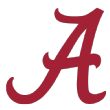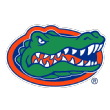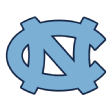After four days of workouts at the NFL combine, let's take a look at which players have moved up and down our top 32, drawing on the same scouting reports as before and making changes where necessary.
We'll continue to update our board as we get closer to the 2017 NFL draft and complete our evaluations. Although it's a given that some players will move into the rankings and others will drop out, this provides a good snapshot of which players currently have the most NFL potential, based on our evaluations.
To see our top 10 players at each position, check out this article.
Note: Underclassmen are marked with an asterisk.

1. Myles Garrett, DE, Texas A&M*
Grade: 95 | Previous Rank: 1
Garrett is the best pure pass-rusher -- and one of the best overall athletes -- in the 2017 draft. You don't see many 272-pound men who run a 4.64 40 or jump 41 inches in the vertical. He played through an ankle injury for much of this past season and still finished tied for sixth in the SEC with 15.0 tackles for loss (including 8.5 sacks). He has a lethal combination of first-step quickness, bend, power and hand-to-hand combat skills. Garrett can fit into any scheme. He's a transcendent-type player.

2. Jonathan Allen, DT, Alabama
Grade: 94 | Previous Rank: 2
Allen is one of the most complete players in this class. He's absolutely dominant against the run (8.5 tackles for loss in his final five games) and has the ability to get after the passer from the interior (15 quarterback hurries and 10.5 sacks). Allen's excellent combination of quickness and power makes him one of the best interior pass-rushers we've studied in this draft class. He constantly pushes the pocket and brings tremendous experience to the table, with 56 games played.

3. Jamal Adams, S, LSU*
Grade: 93 | Previous Rank: 4
Adams has an excellent blend of size, length and athleticism, and it shows up on tape. He's a difference-maker as an in-the-box defender, racking up 7.0 tackles for loss in his last seven games. Adams didn't put on the best performance at the combine -- his 4.56 40 is slightly worse than average for safeties and his 31½-inch vertical is well below average. We'll see what he does at LSU's pro day, but Adams is still a top player in this class.

4. Solomon Thomas, DE, Stanford*
Grade: 93 | Previous Rank: 5
Measuring 6-foot-2⅝ and 273 pounds, Thomas checks pretty much every box. His combination of quickness and power pops off the screen and helped make him one of the biggest draft risers this season. He has elite strength (30 reps on the bench) and he's stout against the run (15.0 tackles for loss, 8.0 sacks and seven quarterback hurries).

5. Malik Hooker, S, Ohio State*
Grade: 92 | Previous Rank: 8
Hooker didn't work out at the combine after having surgery on his labrum and for a hernia, and it's unclear whether he'll be able to work out for teams at all prior to the draft. That shouldn't affect his draft stock too much. Only two players in college football had more interceptions in 2016 than Hooker's seven picks. In his first season as a starter, Hooker showed great instincts and range in coverage.

6. Marshon Lattimore, CB, Ohio State*
Grade: 92 | Previous Rank: 6
A first-year starter, Lattimore has truly elite cover skills, and he tested off the charts in Indianapolis -- 4.36 40, 38½-inch vertical, 11-foot broad jump. But he tweaked his hamstring while working out, according to ESPN's Adam Schefter. This bears watching considering Lattimore's history with hamstring injuries. At 6-foot, 192 pounds, Lattimore has good length and fluid movement skills. He took full advantage of his spike in playing time, with four interceptions and nine pass breakups this season.

7. Leonard Fournette, RB, LSU*
Grade: 92 | Previous Rank: 3
Fournette, who had a nagging ankle injury all season, weighed in at 240 pounds at the combine. He carries the weight well -- and it didn't stop him from running a 4.51 40 -- but it's still a big number for a running back. When fully healthy, Fournette was as good as you'll ever see at the college level in terms of straight-line explosiveness. His angry running style is something at which to marvel, and it will translate well to the next level.

8. O.J. Howard, TE, Alabama
Grade: 92 | Previous Rank: 10
Howard measured nearly 6-foot-6 and 251 pounds, and he ran a 4.51-second 40. That's elite speed for the position. He has the size and arm length (33¾ inches) to play as an in-line TE, and the speed to be a major matchup problem down the field for opposing defenses. Howard has shown the ability to shine on the biggest stages (314 receiving yards and three touchdowns versus Clemson in the past two CFP title games), and he should thrive in a more pass-heavy NFL system.

9. Reuben Foster, ILB, Alabama
Grade: 92 | Previous Rank: 9
Foster was sent home early from the combine after a dustup with a hospital employee. On the field, he's one of the better inside linebacker prospects in recent memory. He flies to the ball, and when he gets there, he shows explosive tackling ability. Foster had 11.5 tackles for loss in his final 10 games of 2016. For a player his size (240 pounds), Foster shows a good combination of agility and speed.

10. Dalvin Cook, RB, Florida State*
Grade: 92 | Previous Rank: 7
Cook, who ranked second in the FBS with 2,253 total yards this season, truly can do it all. He makes defenders miss with subtle changes in direction, and he doesn't need much of a crease to rattle off a big play. At 5-foot-10, 210 pounds and with 4.49 speed, Cook is a big play waiting to happen (18 touches of 25 yards or more in 2016, tied for first among all Power 5 running backs). He's also a very physical blocker in pass protection.

11. Teez Tabor, CB, Florida*
Grade: 91 | Previous Rank: 18
Tabor is really smooth and quick, but what makes him really good is how effective he is at using his hands. That's vital in the NFL when you're working against receivers who know how to get off press coverage. One red flag? Tabor ran a 4.62 40 at the combine. That's not a good number for a cornerback. His elite instincts make up a little bit for the lack of top-end speed, but I'll be interested to see what he runs at Florida's pro day.

12. Corey Davis, WR, Western Michigan
Grade: 91 | Previous Rank: 14
Davis' speed really stands out on tape. He looks like a guy who will run in the 4.4s at his pro day, assuming he's healthy enough to participate after having ankle surgery. If that's the case, he has a chance to be a top-10 pick because of his size (6-foot-2, 205 pounds) and college production. Davis had 332 catches, 5,285 yards and 52 touchdowns at Western Michigan. Yes, he was playing mostly against MAC competition, but he dominated like you'd expect from an elite talent.

13. Sidney Jones, CB, Washington
Grade: 91 | Previous Rank: 20
At 6-foot and 186 pounds, Jones is long and a smooth mover, but he needs to get stronger. He has shown the ability to excel in both man and zone coverage. Jones -- who had 21 pass breakups and nine interceptions in three seasons -- is physical for a smaller-framed guy, and he has great speed (4.47 40).

14. David Njoku, TE, Miami (Fla.)*
Grade: 91 | Previous Rank: 16
Njoku's measurables are a little freakish -- 6-foot-4 and 246 pounds with 35¼-inch arms. Those are good left tackle arms, which will obviously help him as a blocker and in contested-catch situations. He jumped out of the gym at the combine too, with a 37.5-inch vertical and an 11-foot-1 broad jump. A good college player who has the potential to develop into a better pro, Njoku averaged 16.2 yards per reception in 2016.

15. Mike Williams, WR, Clemson*
Grade: 90 | Previous Rank: 12
Williams opted against running the 40-yard dash at the combine. That's the one looming question: What's his true top-end speed? We'll find out at Clemson's pro day on March 16. Here's the reality: At just over 6-foot-3½ and 218 pounds, if Williams runs 4.55 or better, he's totally fine. It's important not to forget what Williams showed on the field this season. He's an elite WR when the ball is in the air, and he physically dominated against Alabama in the CFP National Championship.

16. John Ross, WR, Washington
Grade: 90 | Previous Rank: 32
You might have heard: Ross broke the modern combine record by running a 4.22 40-yard dash. But one thing I want to make really clear: He's not a combine creation; this is a really good football player who looks like a first-rounder on tape. Ross has savvy route-running ability, reliable hands and, yes, blazing speed on the field. He's also a good returner, having scored four return touchdowns in his three seasons at Washington. Ross has a good chance to be a top-15 pick.

17. Taco Charlton, DE, Michigan
Grade: 90 | Previous Rank: 11
Charlton finished the season on a tear, compiling 10 sacks in his final 10 games. He has always had the raw ability, but this past season he showed more consistency and refined technique. Charlton, who fits best as a 4-3 DE, is one of the more underrated players in this group.

18. Garett Bolles, OT, Utah*
Grade: 90 | Previous Rank: 34
A junior-college transfer, Bolles made 12 starts at left tackle in his lone season at Utah. He has room to add bulk and strength to his 6-foot-5, 297-pound frame, but Bolles has an excellent combination of length, flexibility and athleticism to develop into a starting left tackle.

19. Forrest Lamp, G, Western Kentucky
Grade: 90 | Previous Rank: 24
Lamp's below-average arm length (32¼ inches) confirmed that he's a guard in the NFL. Lamp started 51 total games for Western Kentucky, most of which were at left tackle. He's a smooth mover and an excellent athlete, and his tape against Alabama (particularly Tim Williams) was awesome.

20. Malik McDowell, DT, Michigan State*
Grade: 89 | Previous Rank: 15
McDowell is arguably the most physically gifted interior pass-rusher in this class. He didn't play with the same passion and toughness this past season, which is a red flag. But McDowell has elite athleticism and can play multiple positions along the D-line at the next level. He could be a steal in the mid-to-late first round if he lands with the right coaching staff to develop him and keep him motivated.

21. Ryan Ramczyk, OT, Wisconsin*
Grade: 89 | Previous Rank: 17
Ramczyk has the best tape of any offensive lineman in this class. But he also has just one year of major college experience after transferring to Wisconsin from UW-Stevens Points (Division III) and had hip surgery in January that bears monitoring. With an ideal frame (6-foot-6, 310 pounds), Ramczyk proved to be consistent as a run-blocker and in pass protection in 2016.

22. Derek Barnett, DE, Tennessee*
Grade: 88 | Previous Rank: 19
Barnett isn't an elite athlete, but he plays with good discipline, a consistent motor and impressive physicality. He also had ridiculous production the past two seasons (23.0 sacks and 31.5 tackles for loss). At 259 pounds, he's not a guy who's going to overwhelm offensive tackles by converting speed to power. The more I watch him, the more I think he fits best at 3-4 OLB.

23. Tre'Davious White, CB, LSU
Grade: 88 | Previous Rank: 22
White is one of the most experienced players in this class, having started 47 games in his LSU career. His elite football instincts and good overall feel for route combinations were on full display at the Senior Bowl practices. White doesn't have great ball production (only six career interceptions), but he has good speed (4.47 40) and brings added value as a punt returner.

24. Takkarist McKinley, OLB, UCLA
Grade: 87 | Previous Rank: 21
At 6-foot-2 and 250 pounds, McKinley plays harder than any pass-rusher I've watched in years. He has really long arms (34¾ inches) and terrific speed (4.59 40), but he hasn't quite figured out how to use his hands. It might take McKinley a little bit to refine his technique, but he's not a guy I'd bet against.

25. Haason Reddick, ILB, Temple
Grade: 88 | Previous Rank: 62
Reddick played defensive end in college, but he'll be an off-the-ball linebacker in the pros, similar to the transition Tedy Bruschi made coming out of Arizona. He ran a 4.52 40 at 6-foot-1½ and 237 pounds. That's outstanding. And his 11-foot-1 broad jump marked just the third time since 2006 that a linebacker eclipsed the 11-foot mark in Indy. Over the span of about six weeks, Reddick has gone from a virtual unknown to having a legitimate chance to be a first-round pick.

26. Alvin Kamara, RB, Tennessee*
Grade: 88 | Previous Rank: 29
Kamara is just so explosive, posting the best vertical jump (39.5 inches) and broad jump (10 feet, 11 inches) among all the running backs at the combine. He has prototypical size at 5-foot-10 and 214 pounds and exceptional vision/lateral quickness and the power to break a lot of tackles. Kamara has the skill set of a first-rounder, but the on-field sample size with him isn't very large (he averaged just 8.75 carries per game in his final two seasons).

27. Christian McCaffrey, RB, Stanford*
Grade: 87 | Previous Rank: 36
McCaffrey took full advantage of his opportunity at the combine, running a 4.48 40 and the second-fastest three-cone for a RB since 2006 (6.57). I was pleasantly surprised by McCaffrey's straight-line speed, but the short-area quickness measured by the three-cone definitely shows up on tape. If you draft McCaffrey, you're getting a really good running back and wide receiver. You can't say that about many guys.

28. Budda Baker, S, Washington*
Grade: 87 | Previous Rank: 26
At 5-foot-9⅝ and 195 pounds, Baker lacks ideal size, but when you watch the film, he's all over the field. A three-year starter, Baker was the only Pac-12 defensive back to finish this season with double-digit tackles for loss. He also had two interceptions and six pass breakups. He has a lot of Tyrann Mathieu-like qualities

29. Quincy Wilson, CB, Florida*
Grade: 87 | Previous Rank: 28
The more I watch Wilson, the more impressed I get. He's not quite as smooth and athletic as Tabor (No. 11 on this list), but he has the better top-end speed (4.54 vs. 4.62). At 6-foot-1½, Wilson has a good length, and he's experienced, with 39 games played, including 24 starts.

30. Mitch Trubisky, QB, North Carolina*
Grade: 87 | Previous Rank: 27
There's a lot to like about Trubisky's tape. He flashes the ability to go through progressions, and he's the most accurate quarterback in this class. I love Trubisky's pocket presence, but have concerns about some of the critical errors he made, including two bad interceptions versus Stanford. Trubisky's 13 career starts also makes him a tough evaluation; the history of quarterbacks leaving school early without a ton of game reps isn't great (just look at Mark Sanchez). But with the lack of top-end talent in this draft class and the number of teams drafting in the top 10 that need new blood at the position, Trubisky could be a high pick come April.

31. Jourdan Lewis, CB, Michigan
Grade: 87 | Previous Rank: 38
Lewis is undersized at 5-10 and 188 pounds and he's not the fastest guy (4.54), but man, his tape is fun. He shows great physicality for a player his size, and he shadows as well as any cornerback I've seen in the past few years. Lewis has unbelievable instincts, along with the ball skills you look for (31 pass breakups and four INTs the past two seasons). He's plug-and-play nickel/slot corner from day one who can eventually transition to playing on the outside as he gets more experience.

32. Marcus Maye, S, Florida*
Grade: 86 | Previous Rank: 55
Maye is not as physical against the run as former teammate and 2016 first-rounder Keanu Neal, but he's better in coverage than Neal was coming out. He can excel in either man or zone coverage and he shouldered a lot of responsibilities in Florida's defense, making pre-snap checks and getting teammates lined up.
